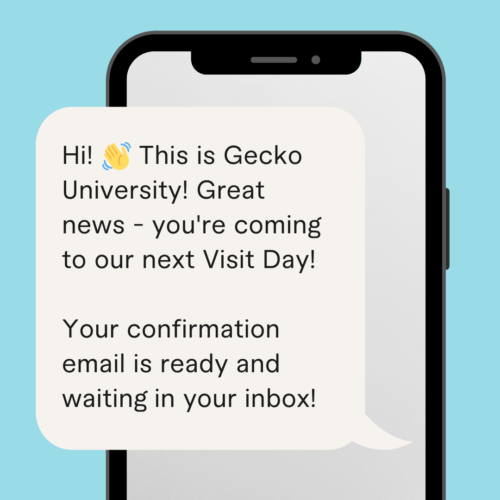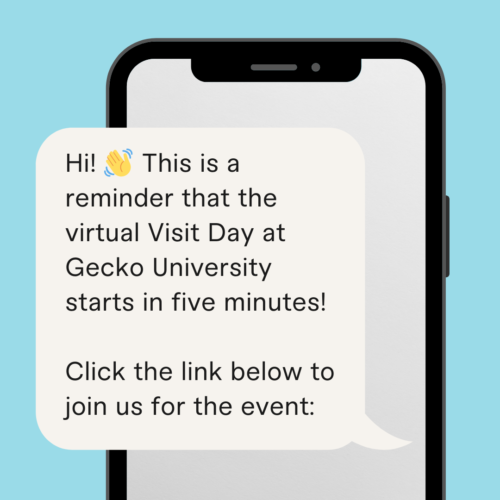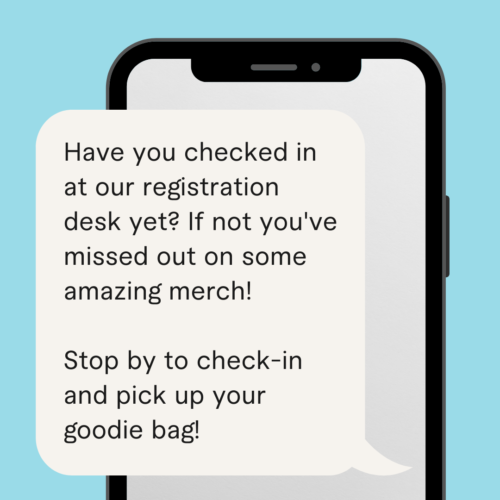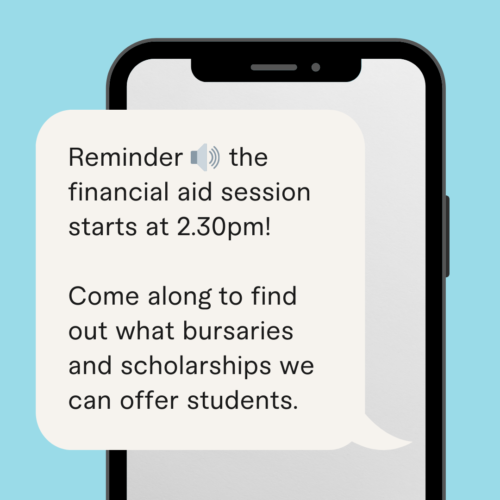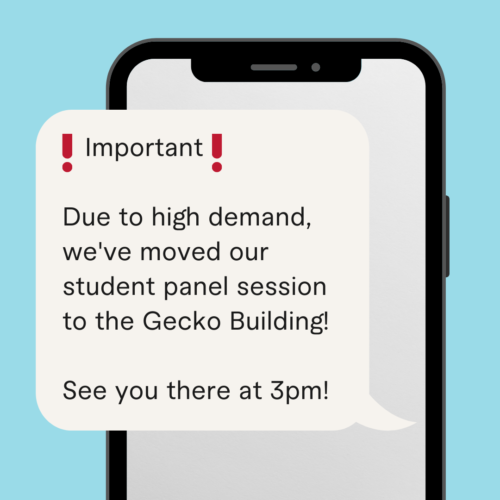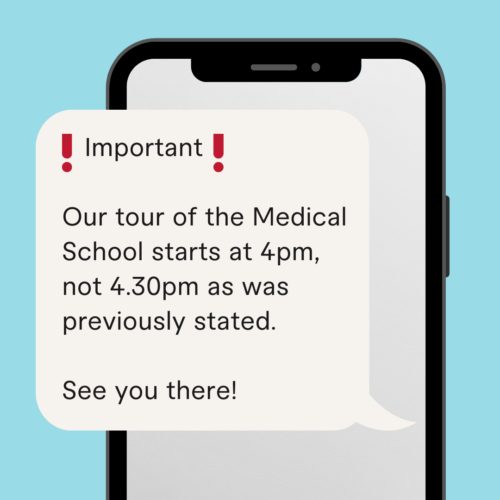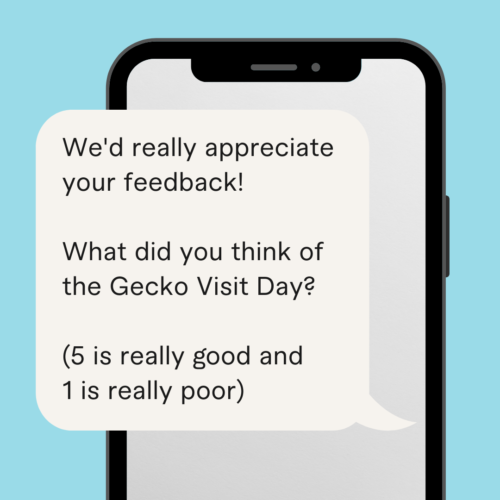How much impact can you have with 160 characters? The answer is: a lot. This is especially true when you’re running recruitment events – whether they’re in-person, virtual, or a hybrid format. Just think about it. Prospective students receive an incredibly high volume of information from schools, a lot of which comes in the form of email, and it’s all competing for their attention. It’s no wonder they might tune out and not notice the email about your next Visit Day.
A text, on the other hand, is short, digestible, and impactful. In fact, research has shown that 90% of texts are read within 15 minutes of being sent. With that in mind, using texts to cut through the noise and prompt your prospects to take a specific action is a no-brainer. Whether you want to remind them to check-in at your event, tell them that a session has changed venue, or get their feedback afterwards, texting students can really help you dial up engagement!
As with most things, less is more, so you don’t want to overwhelm sign-ups. Texts should be used sparingly to convey important information. But doing it right – and being intentional about texting students – can be a real gamechanger at your higher ed events.

